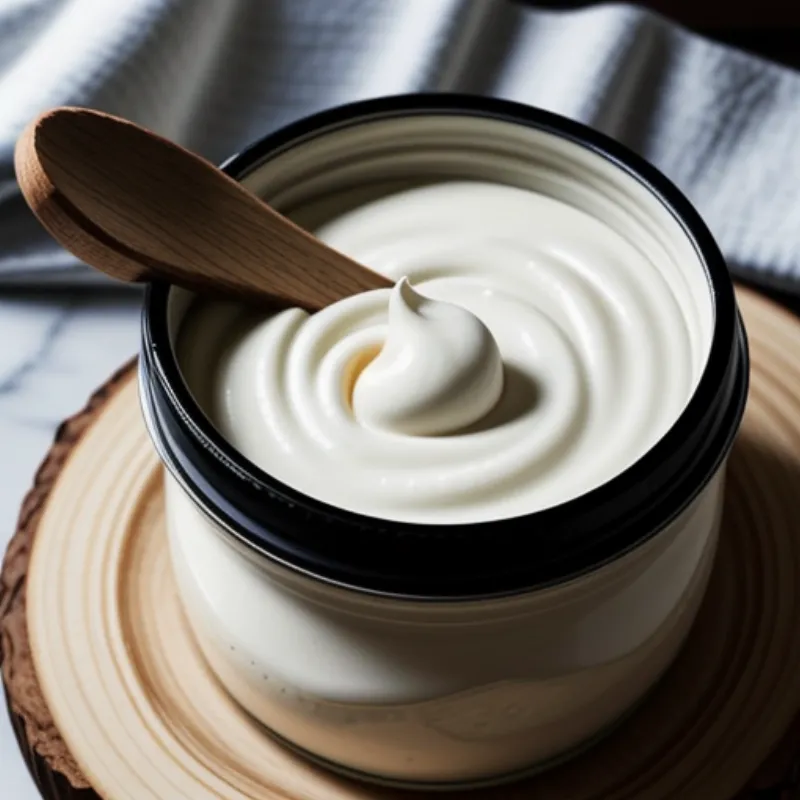Fermented cashew cheese! Even saying it sounds fancy, right? But let me tell you, this plant-based wonder is not only delicious and surprisingly easy to make, but it’s also incredibly versatile. Imagine a creamy spread on crackers, a tangy dollop on your favorite salad, or a luxurious addition to your next vegan cheeseboard. And the best part? You don’t need to be a fermentation guru to whip this up.
My journey with fermented cashew cheese began a few years ago when I was on a quest to find dairy-free alternatives that were both healthy and delicious. I’ll admit, I was skeptical at first. Fermented nuts? Cheese? How could it possibly compare? But after my first bite, I was hooked. The creamy texture, the tangy flavor, the sheer satisfaction of creating something so delicious from scratch – it was a revelation.
So, are you ready to embark on your own fermented cashew cheese adventure? Let’s get started!
Gathering Your Ingredients
Before we dive into the process, let’s gather our ingredients. For this recipe, you will need:
- 1 cup raw cashews
- 1 cup filtered water, plus more for soaking
- 2 tablespoons nutritional yeast (optional, but adds a cheesy flavor)
- 1 tablespoon lemon juice
- 1 teaspoon sea salt
- 1/2 teaspoon probiotic powder (look for vegan options)
A Note on Ingredients
- Raw cashews are key here as roasted ones won’t ferment properly. Make sure they’re unsalted and free of any additives.
- Nutritional yeast adds that cheesy, umami flavor, but it’s optional if you don’t have it on hand.
- Probiotic powder is our fermentation hero! You can find it at most health food stores. Look for a variety that contains multiple strains of beneficial bacteria.
Tools of the Trade
You’ll need a few tools to make this cheesy magic happen:
- A large bowl for soaking the cashews
- A high-speed blender
- A cheesecloth or nut milk bag
- A glass jar for fermenting
- A rubber band or string
The Art of Fermentation: Step-by-Step Guide
- Soak the cashews: Rinse the cashews under cold water and then place them in a large bowl. Cover them with filtered water, making sure there’s at least two inches of water above the nuts. Soak for at least 4 hours, or preferably overnight. This step helps soften the cashews and makes them easier to blend.
- Drain and rinse: After soaking, drain the cashews and rinse them thoroughly under cold water.
- Blend it up: Add the drained cashews to your high-speed blender along with 1 cup of filtered water, nutritional yeast (if using), lemon juice, and sea salt. Blend on high speed for 2-3 minutes, or until you achieve a smooth and creamy consistency.
- Fermentation time: Transfer the cashew cream to your clean glass jar. Stir in the probiotic powder, ensuring it’s well incorporated. Cover the jar with a cheesecloth or nut milk bag and secure it with a rubber band or string. This allows air to circulate while preventing any unwanted guests from entering your ferment.
- Patience is a virtue: Find a warm spot in your kitchen (around 70-75°F is ideal) and let the cashew cream ferment for 24-48 hours. The fermentation time will affect the flavor and texture of your cheese. A shorter fermentation will yield a milder flavor, while a longer fermentation will result in a more tangy and pronounced cheesy taste.
- Taste and adjust: After 24 hours, give your cashew cheese a taste. If you prefer a tangier flavor, let it ferment for another 24 hours.
- Storage: Once the fermentation is complete, cover the jar with a lid and store it in the refrigerator. Your fermented cashew cheese will last for up to two weeks in the refrigerator.
Tips and Tricks from My Kitchen to Yours
- Experiment with flavors: Once you’ve mastered the basic recipe, don’t be afraid to get creative! Add your favorite herbs, spices, or even roasted vegetables to create unique flavor combinations.
- Adjust the texture: If you prefer a thicker cheese, you can line a strainer with cheesecloth and place the fermented cashew cream in it. Allow it to drain in the refrigerator for a few hours, or overnight, to achieve a firmer consistency.
- Troubleshooting: If your cashew cheese hasn’t thickened or developed a tangy flavor after 48 hours, don’t fret! It might just need a little more time. Check the temperature of your fermentation spot and give it another 12-24 hours.
Serving Up Your Masterpiece
This fermented cashew cheese is incredibly versatile and can be enjoyed in countless ways! Here are a few ideas:
- Spread it on crackers or crusty bread
- Use it as a dip for fresh vegetables
- Dollop it on salads
- Add a spoonful to your favorite soups or stews for a creamy, cheesy boost
- Create a stunning vegan cheese board with your homemade cashew cheese, crackers, fruits, and nuts
 Fermented Cashew Cheese in a Jar
Fermented Cashew Cheese in a Jar
Frequently Asked Questions
Q: Can I use roasted cashews instead of raw cashews?
A: While roasted cashews might seem convenient, they won’t ferment properly. Raw cashews are essential for this recipe as they haven’t been subjected to high heat, which can destroy the enzymes needed for fermentation.
Q: What’s the purpose of the probiotic powder?
A: Probiotic powder introduces beneficial bacteria to the cashew cream, which are responsible for the fermentation process. These bacteria break down the sugars in the cashews, creating lactic acid, which gives fermented cashew cheese its characteristic tangy flavor.
Q: Can I omit the lemon juice?
A: Lemon juice acts as an additional catalyst for fermentation, but it can be omitted if you don’t have any on hand. However, keep in mind that it might slightly affect the flavor and texture of your cheese.
 Vegan Cheese Platter with Fermented Cashew Cheese
Vegan Cheese Platter with Fermented Cashew Cheese
Embrace the World of Fermentation
Making your own fermented cashew cheese is an incredibly rewarding experience. It’s a testament to the power of simple ingredients and the magic of fermentation. And the best part? It’s delicious, nutritious, and kind to our planet. So, go ahead, roll up your sleeves, and give it a try! You might be surprised at how easy and enjoyable it is to create your own cheesy masterpiece.
Do you have any other questions about making fermented cashew cheese? Share your thoughts and experiences in the comments below! And don’t forget to check out our other fermentation adventures on Family Cuisine – we have a whole world of flavors waiting to be discovered!
